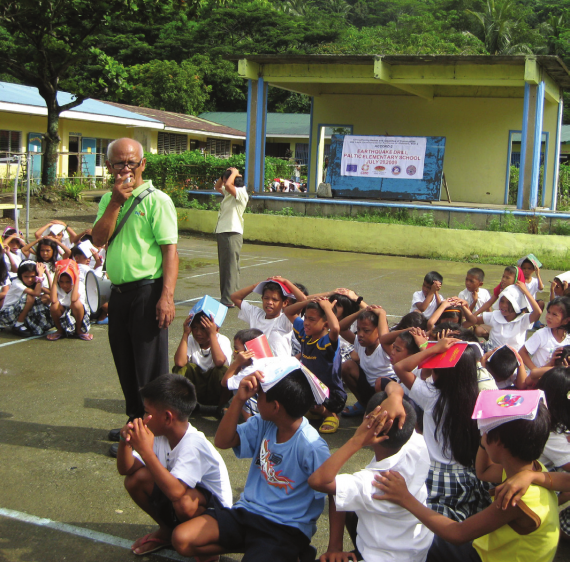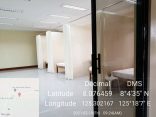Paltic Elementary School, in Dingalan municipality, lies at the foot of the Sierra Madre Mountains facing the Pacific Ocean. In 2004, the school witnessed a massive landslide that claimed hundreds of lives and properties in the village. Following the disaster, community risk assessments were conducted and identified other possible hazards – earthquake, tsunami, typhoon, storm surge and flash floods – that pose a threat to the whole village, and also to the school.
Hazards such as these could be too much for a small public school like Paltic Elementary School, with barely few buildings to house its 872 children. Aside from exposure to hazards, the school has to confront the common problem of public schools in the country – lack of budget for its development.
The Department of Education (DedED) implements a “school-based management system,” giving local school administrators the full mandate and responsibility to manage and supervise their respective schools. For Paltic Elementary School, this meant, among others, dealing with the vulnerabilities of the school almost wholly on its own. It might have been because of this enormous challenge that “Sir Jimmy” Evangelista, school principal of PES, wholeheartedly supported the ACCORD projects in every way that he and the teachers can.
During the first ACCORD project, Sir Jimmy was principal of the Umiray Elementary School. On his own initiative, he conducted quarterly earthquake drills that were unannounced. He was also very active, and worked closely with the village council in organizing workgroups who constructed gabions that will minimize the impact of flooding on the school. He also led Umiray teachers in incorporating DRR in lesson plans. Sir Jimmy was transferred to Paltic Elementary School during ACCORD-2 and his commitment to DRR remained steadfast.
The teachers of Paltic Elementary School were equally motivated. They actively participated in trainings on community-based disaster management, disaster preparedness and project cycle management. They were able to pass on the knowledge on DRR they acquired from these trainings to their students by also integrating DRR messages into their lesson plans. Paltic and Umiray elementary schools were among the few who first integrated DRR in lesson plans, during the first ACCORD project.
Contingency planning workshops and school drills were also conducted. When the classroom discussions and intra- and inter-school contests focusing on DRR theme was launched during ACCORD 2, Paltic Elementary School actively participated.
In SY 2009-2010, Mr. Evangelista, who also volunteered to be a community facilitator, and his colleagues who participated in the project cycle management training applied what they learned and initiated a nutrition improvement project. This is due to the fact that high malnutrition among its students was one of the alarming concerns that the school cannot ignore. With very limited funds sourced from the barangay and the school canteen meals were provided for malnourished schoolchildren. The school also started growing vegetables using natural and organic methods. Instead of cultivating ornamental plants that usually adorns the school grounds, students and teachers planted vegetables in the available spaces of the school.
In 2011, The Food Facility project presented Paltic Elementary School the opportunity to scale up its nutrition improvement initiative by becoming a “classroom” for demonstrating the link amongst food production, nutrition and health and disaster risk reduction. For a budget of P12/child, nutritious food was provided to 135 malnourished children in school. At times, more children were even covered by the feeding program. Mr. Evangelista said that some pupils who cannot afford to bring their own meals during school days were also fed. The Rural Health Unit provided complementary support de-worming and other health services. Parents’ classes were organized to increase awareness on food, nutrition, health and DRR. Demonstration of growing vegetables applying natural methods, and of producing organic fertilizers and pesticides was intensified.
When the Food Facility project was completed, 133 children out of 135 have attained normal nutritional status. Sir Jimmy cited the improvement in the health status of the children as one of the reasons for their improvement in school performance. Furthermore, the number of absentees also declined. He observed that children are more active in school activities. Seeing the developments done to their community especially to their children, the parents were encouraged to engage in and participate more in school activities. Beyond the school premises, Sir Jimmy has expressed optimism that Paltic Elementary School has contributed to educating the general public and increasing their awareness about the role of producing and consuming safe food in building resilient communities.






